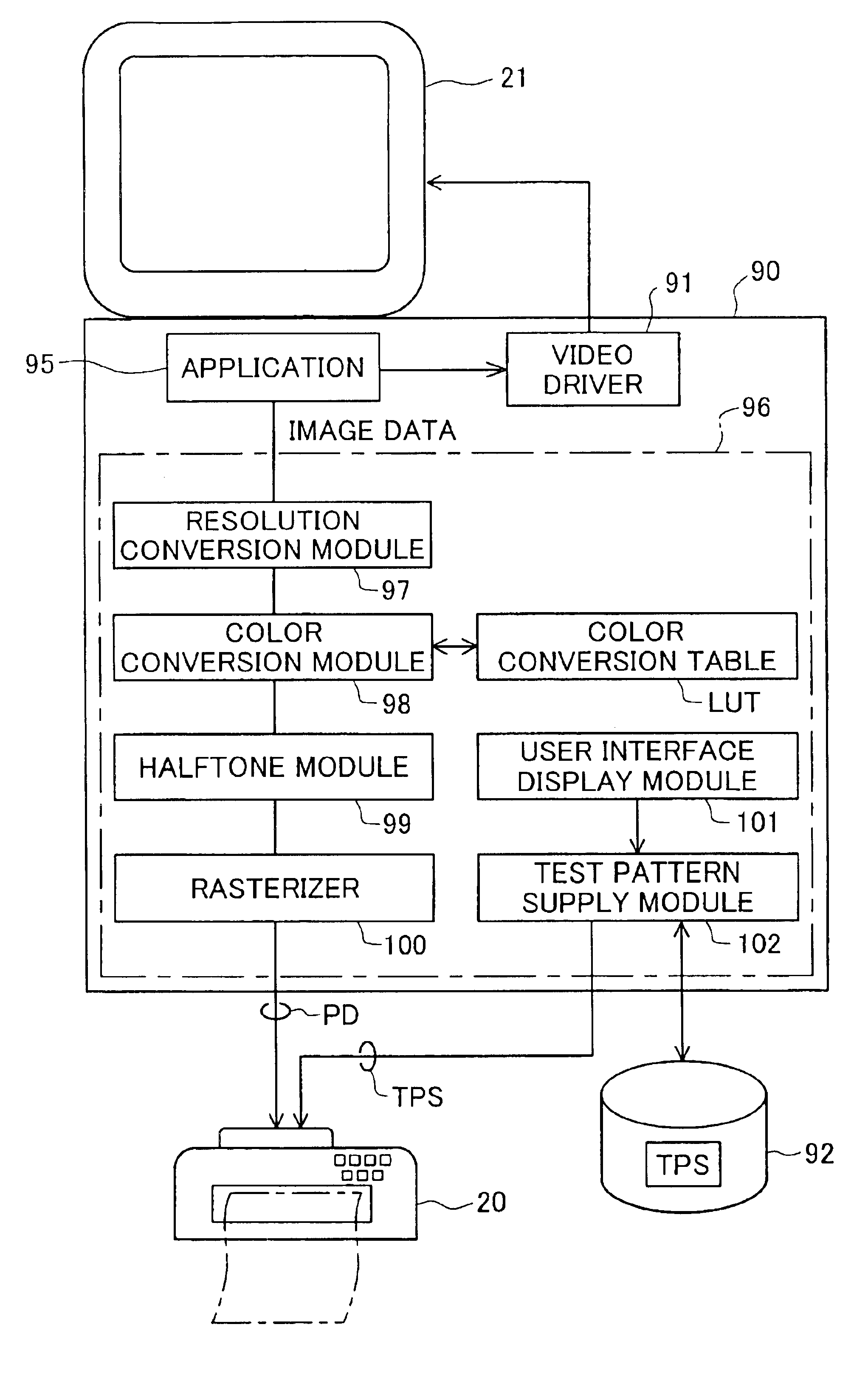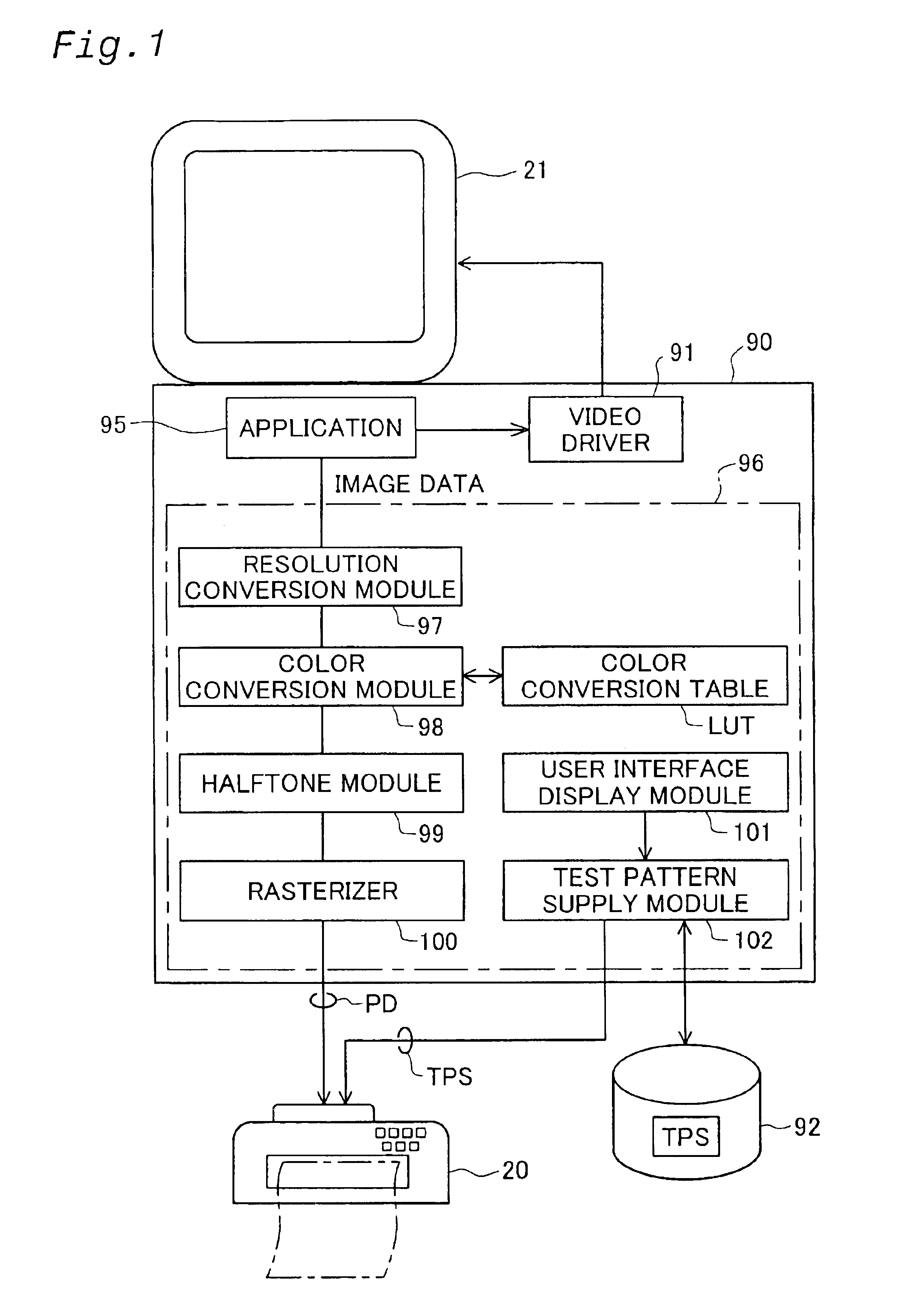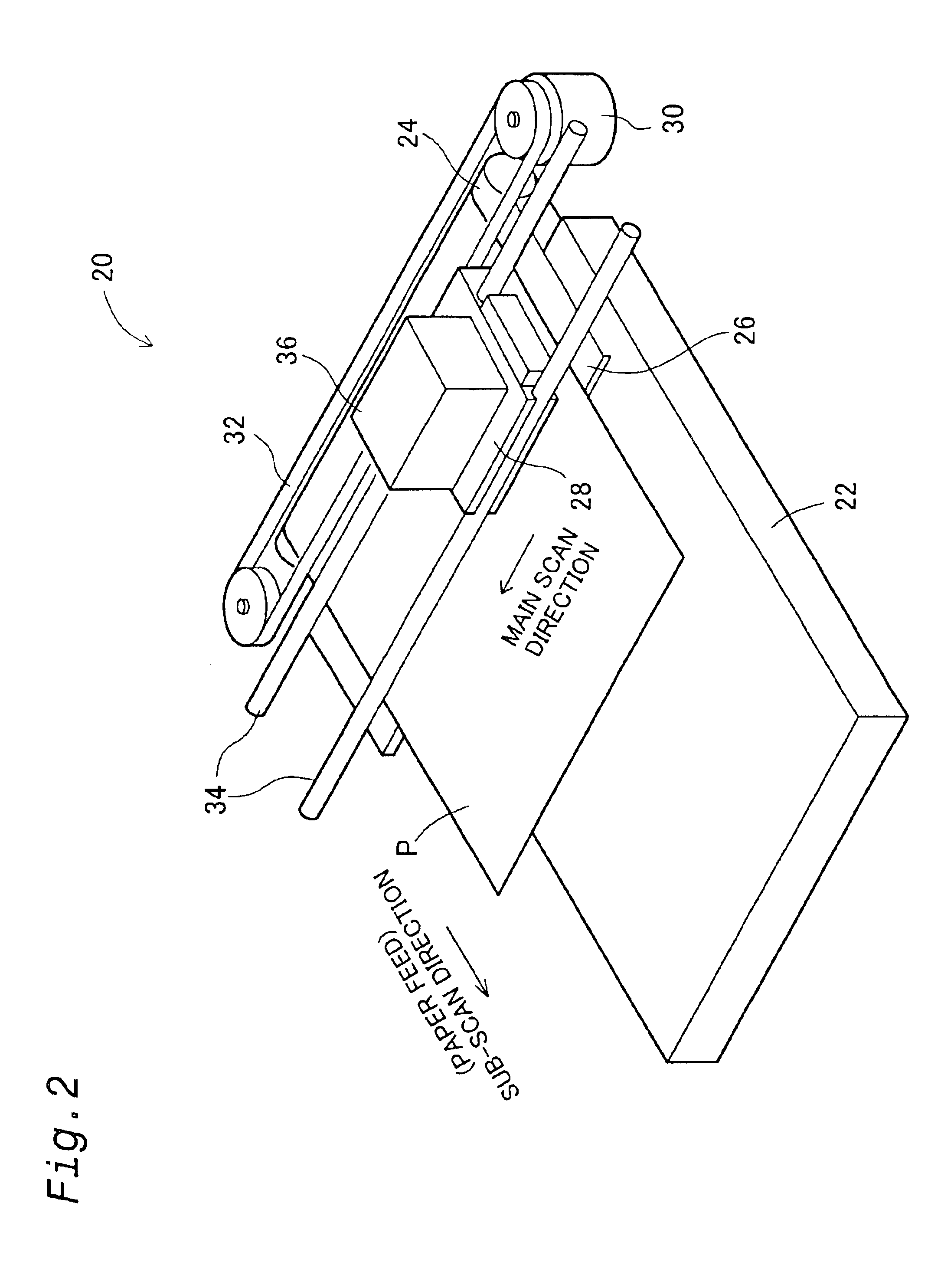Printing with selection of sub-scanning
a sub-scanning and printing technology, applied in the field of performing printing, can solve the problems of ink bleed, image degradation due to paper feed error, and the tendency to generate band-form areas of image deterioration called "bands" to become less readily apparent,
- Summary
- Abstract
- Description
- Claims
- Application Information
AI Technical Summary
Benefits of technology
Problems solved by technology
Method used
Image
Examples
second embodiment
C. Modification of the Second Embodiment
The present invention in not limited to the embodiments or examples described above, and various other variations may be implemented within the scope thereof. For example, the variations described below are possible.
modification 1
C1. Modification 1
In the preceding examples, the printing that is performed in the interlace recording mode using the printing head having the nozzle pitch of 2 dots or more. But, this invention is applicable to the printing that is performed using the high density nozzle (that is the printing head whose nozzle pitch k is 1 dot)
modification 2
C2. Modification 2
In the preceding examples, the color patches of the test pattern are gray patches reproduced with black ink only, but it would be possible to use different color patches. For example, single-color test patches reproduced with cyan ink or magenta ink could be used.
PUM
 Login to View More
Login to View More Abstract
Description
Claims
Application Information
 Login to View More
Login to View More - R&D
- Intellectual Property
- Life Sciences
- Materials
- Tech Scout
- Unparalleled Data Quality
- Higher Quality Content
- 60% Fewer Hallucinations
Browse by: Latest US Patents, China's latest patents, Technical Efficacy Thesaurus, Application Domain, Technology Topic, Popular Technical Reports.
© 2025 PatSnap. All rights reserved.Legal|Privacy policy|Modern Slavery Act Transparency Statement|Sitemap|About US| Contact US: help@patsnap.com



